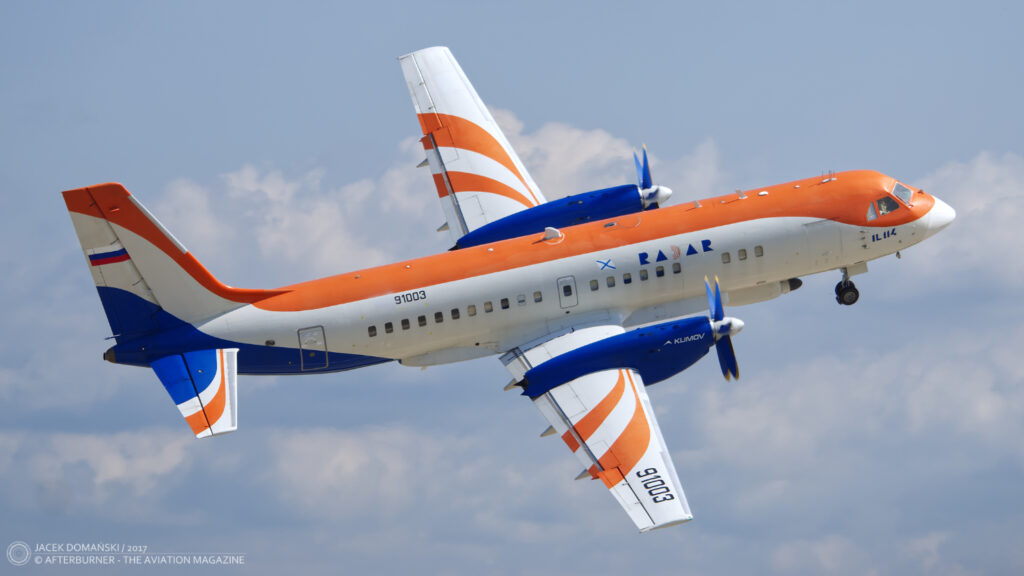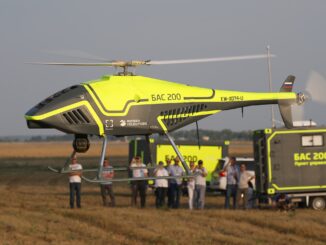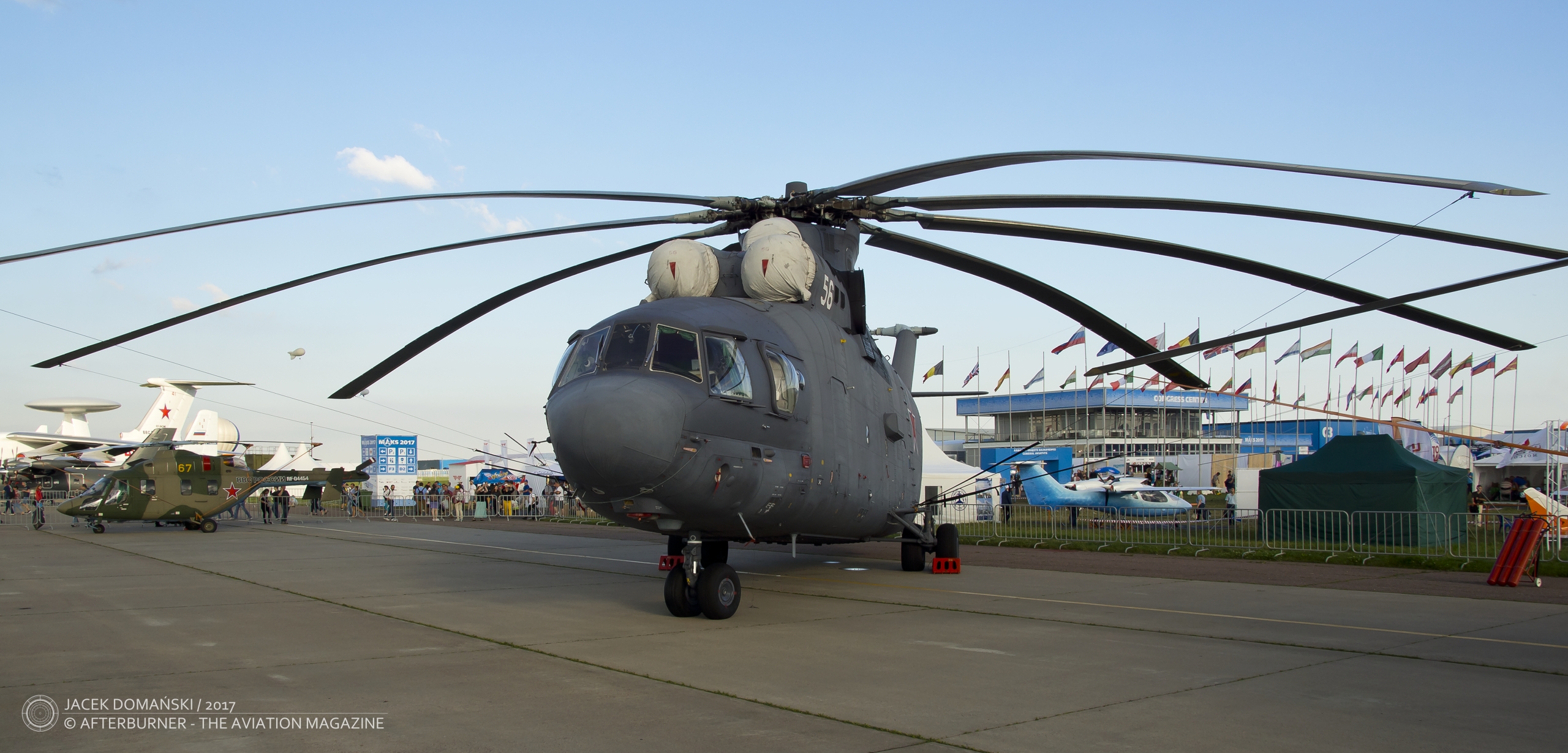 In the Cold War era, the Soviet Union developed and then introduced into active service several aircraft of the whole range of passenger air transport – from short regional travels to long haul, transcontinental flights. Airliners such as Tu-134, Tu-154 and Il-62 became the aviation icons of the Eastern Bloc, operated by passenger carriers from all over the world. However, the final, crisis years of the USSR, led to sudden interruption of the development of the new airliners. The situation remained unchanged after the collapse of the Soviet Union and, interestingly, still continues to this day.
In the Cold War era, the Soviet Union developed and then introduced into active service several aircraft of the whole range of passenger air transport – from short regional travels to long haul, transcontinental flights. Airliners such as Tu-134, Tu-154 and Il-62 became the aviation icons of the Eastern Bloc, operated by passenger carriers from all over the world. However, the final, crisis years of the USSR, led to sudden interruption of the development of the new airliners. The situation remained unchanged after the collapse of the Soviet Union and, interestingly, still continues to this day.
For a number of years, the Soviet aviation – in principle – kept pace with the then contemporary trends in passenger aviation. The country´s construction bureaus designed several aircraft that allowed the Soviet Union to develop domestic and international passenger air transport, monopolised by the state aviation company Аэрофлот (Aeroflot). Specific relationship with other Eastern Bloc countries guaranteed the Soviet aircraft were also bought by their national airlines. In addition, the aeroplanes made in the USSR found several other customers in Asia, Africa and South America.
Short haul passenger transport, as well as connections with the remote areas in Siberia, were operated by simple but reliable aircraft, such as Antonov An-2, Ilyushin Il-12 and Il-14. In the 1950s, the Soviet Union developed a series of successful turboprop airliners for regional and medium haul routes, including Antonov An-10, An-24 and Ilyushin Il-18.
The USSR was a pioneering country in terms of jet-powered passenger aviation. Its first turbojet airliner, Tupolev Tu-104, was introduced into operational service in 1956, as the second passenger jet in the world (after the British-made de Havilland Comet). Moreover, due to some safety concerns with the Comet, the Tu-104 was the only operational passenger jet aircraft in the world until 1958.
That good streak continued through the two following decades. That period was marked by introduction of Tupolev Tu-114, long-range turboprop airliner (at the time of its introduction the largest and the fastest passenger aircraft in the world, also providing the longest range); Yakovlev Yak-40 short haul jet (later succeeded by its upgraded variant, Yak-42); Tupolev Tu-134 and Tu-154 medium range jets; long-range Ilyushin Il-62 and even the second supersonic passenger aircraft in the world, Tupolev Tu-144. For many years, the triad of the USSR airliners that included the Tu-134, Tu-154 and Il-62, was the symbol of development of the Eastern Bloc, as well as an icon of the Soviet aviation industry.
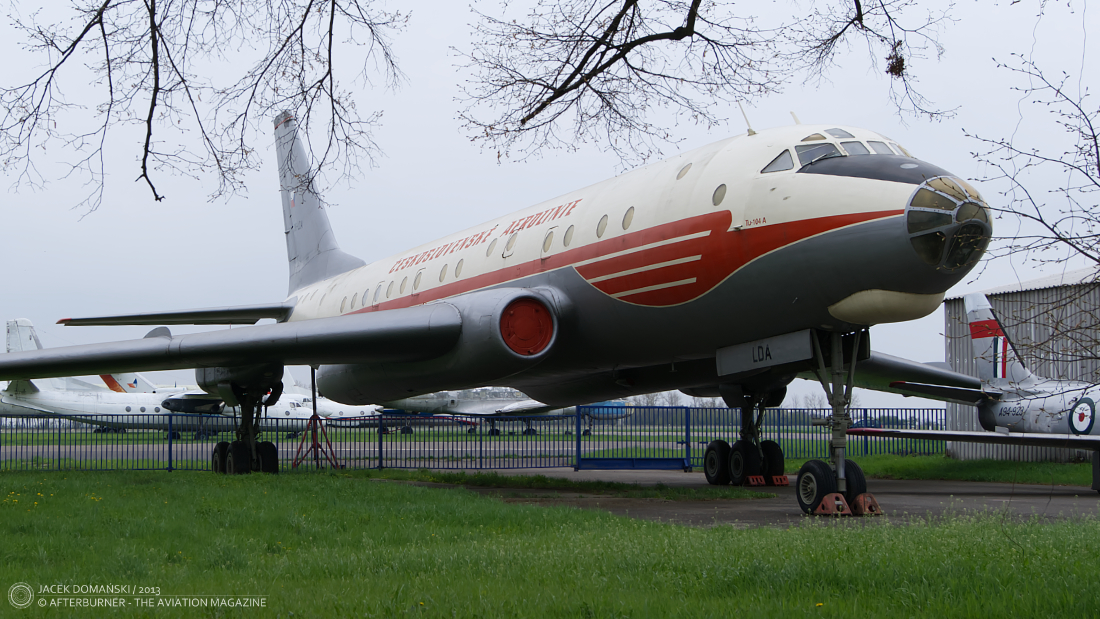
In the 1980s, the first signs of crisis appeared. Although the Soviet construction bureaus were still promptly reacting upon new world trends in the passenger air transport, the design and development stage lasted significantly longer and usually suffered from lack of sufficient funds.
Ilyushin Il-86 is one of the best examples of stagnation that impacted the Soviet aviation industry at that time. Development of that aeroplane began already in 1970 and it was intended to follow the latest trend in passenger flights, offered by comfortable, wide-body airliners.
The Il-86, that was the first Soviet wide-body airliner, performed its maiden flight in 1976 and, initially, had to commence regular passenger service during the 1980 Moscow Olympics. However, that deadline was not followed, and the Il-86 was officially introduced into service only half year later.
Although the development of the Il-86 began at the same time as its Western counterparts, it took more than ten years for the Ilyushin construction bureau to make the aircraft operational. That period was more than two times longer than development of the first wide-body, twin-engine passenger jet in the world, Airbus A300. Its manufacturer, Airbus Industries, was formally founded in December of 1970. Less than two years later, the A300 performed its maiden flight. And only within another two years the airliner was introduced into operational service.
On the other side of the Iron Curtain, it needed ten years to develop and introduce the Il-86 into service. That, by the way, was also significantly longer than the time spent on development of the Il-62 – its first concept was presented in 1960, first flight was made in 1963 and in the early 1967, the aeroplane commenced its operational service.
Regrettably for the Il-86, the infrastructure of the Soviet airports was not ready to handle increased passenger capacity of the wide-body airliners. Therefore, it failed to get any commercial interest of Aeroflot and the Il-86 production and commercial service was based purely on political background. It was similar with other Eastern Bloc countries. The new Soviet airliner was refused by two major national carriers, PLL LOT in Poland and Interflug in the East Germany. Finally, Xinjiang Airlines from China became the only foreign customer for the Il-86 and acquired four examples of that aircraft between 1991 and 1993.
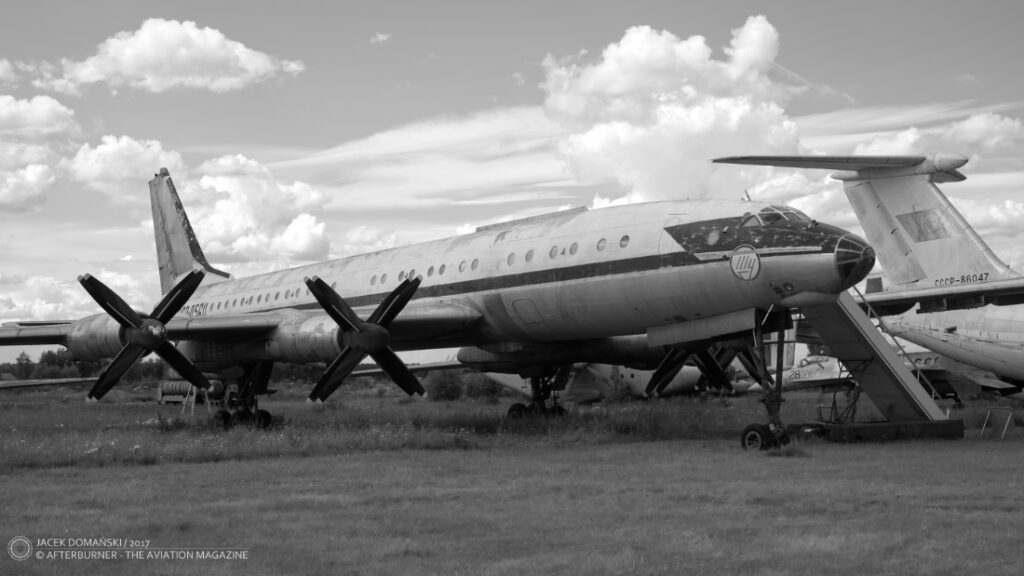
There were only about one hundred of the Il-86 jets made but their service time with Aeroflot was relatively short. It was caused by engines the airliner was equipped with – four Kuznetsov NK-86 powerplants were just modified NK-8 engines, introduced into service in the early 1960s. At the beginning of the 2000s, several countries implemented new noise regulations for aircraft and this practically meant the end of international service for the first Soviet wide-body airliner. Until 2006, Aeroflot retired all its Il-86s from active service.
New regional airliner, designed by Ilyushin construction bureau, shared similar fate. In the early 1980s, the company presented an initial concept of Il-114 twin-engine turboprop aircraft, similar in its concept and role to ATR-42/ATR-72, Dash 8 or Saab 2000.
The development of the Il-114 officially began in 1986. Its prototype successfully performed the maiden flight in 1990 but then the development stagnated. The aircraft was, although, introduced into operational service only in the 2000s but just a few examples were made. Moreover, all they were retired after only a few years – more information about the aircraft can be found here, in one of our articles from Aviation History Friday series.
Another attempt to create the modern, wide-body airliner, was made by the Ilyushin construction bureau in the mid-1980s. The aeroplane was developed by significantly reworking of the initial concept of the Il-86 that was turned into four-engine, long-haul passenger aircraft, designated Il-90.
The Il-90 performed its maiden flight in 1988 and became operational in 1993. Nevertheless, it never could compete with Boeing or Airbus airliners in the reality of post-Soviet world. The new Ilyushin airliner was met with complete lack of interest abroad. What´s more, one year before the Il-90 commenced its operational service with Aeroflot, the Russian national carrier acquired its first Airbus A310s and made it perfectly clear the airline and its passengers prefer the Western airliners.
Eventually, only thirty Il-90 aircraft were made until 2009, when their production was ceased. Cubana airline became the sole foreign customer for that airliner, acquiring five examples. Aeroflot withdrew the last Il-90 from active service in 2014.
Another Russian aviation company, the Tupolev construction bureau, intended to replace its iconic Tu-154 airliner by a twin-engine, medium range aircraft, designated Tu-204 / Tu-214. After its maiden flight in January 1989, the aeroplane was initially considered a worthy successor of the Tu-154 but, shortly thereafter, it shared the same sad fate of all new Russian airliners.

At first, the development of the new Tupolev airliner was slowed down by collapse of the Soviet Union, with the consequence that the Tu-204 performed the first scheduled passenger flight only in February 1996. Then, the airliner suffered from the poor technical support, lack of spare parts and high cost of flight hour. As a result, only eighty-six examples of the Tu-204/Tu-214 aircraft in all variants were built.
Even though the latest, deeply modernized variants of the Tu-204 were equipped with modern Russian (or imported) avionics and met all international standards, there was almost no demand from any commercial aviation companies. Aeroflot already got rid of all its Tu-204s in 2005, thus less than 20 aircraft of this type remained in active service with smaller commercial airlines. Finally, the only significant customers of the Tu-204 were the Russian Post and Russian Ministry of Defence, progressively replacing their Tu-154 fleet with the new Tupolev aircraft. Only single examples of the Tu-204 were sold to China, Kuba, Egypt and North Korea.
In the 21st century, after more than a decade of recession, the Russian economy began to grow again, which was also reflected in rapid increase of domestic and international passenger air transport.
However, the Russian aviation manufacturers could not adapt to the new reality that came after the collapse of the Soviet Union. Although offering some interesting aircraft – with the end of central-planned economy, dependent markets in the Eastern bloc countries and facing the free-market conditions – Russian companies were not able to secure the same level of post-sale service, maintenance and customer care as their competitors. As a result, none of the passenger airliners they designed and developed in 1980s and 1990s followed the success of the previous generation.
Airlines of the former Eastern bloc countries, based on their experiences with maintenance issues and high operational costs of the Soviet-made airliners, almost immediately switched for Western aircraft. And to make matters worse, Russian aviation companies followed them shortly.
Aeroflot, usually considered the national carrier in Russia and controlling over 40% of domestic market in the 2010s, built its modern fleet on different variants of Airbus and Boeing airliners. And the situation was very similar with other major commercial airlines – Aeroflot subsidiary company Авиакомпания ´Россия´ (Rossiya Airlines), JSC Siberia Airlines / S7 Airlines and Ural Airlines. Usually, in the late 2010s, many of them operated no single aircraft of the Russian origin.
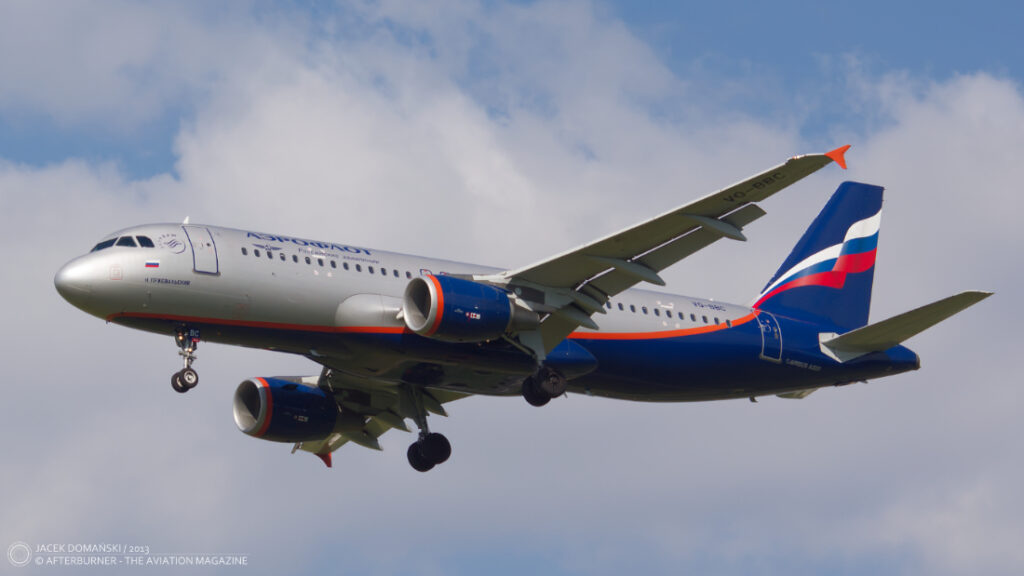
Despite that fact, the Russian aviation companies made a few more attempts to introduce new passenger airlines into the market. Especially that they were backed by the Russian government that saw the new projects as the opportunity to prove how successful the national economics was, as well as acquire significant amounts in hard currencies as the result of export sales.
In 2001, the Russian government allocated 46 million USD to develop Russian Regional Jet (RRJ), a new regional passenger jet for up to 100 passengers. The call was responded by Sukhoi, Myasishchev and Tupolev construction bureaus. In 2003, the Sukhoi RRJ project was approved for further development. In addition, separated programme was opened to develop new jet engines for the RRJ, financed by the government with an amount equal to 63 million USD. At the time of beginning the development, market demand for the RRJ was estimated at approximately 800 examples.
A fundamental change for the Russian aviation industry took place in February of 2006. Following the decree of the Russian President Vladimir Putin, the domestic aviation industry was merged in one company, OJSC United Aircraft Corporation (UAC). The new subject incorporated Ilyushin, Irkut, Mikoyan, Sukhoi, Tupolev, and Yakovlev construction bureaus, in order to – as it was stated in the official announcement – protect and develop the scientific and industrial potential of the Russian aircraft industry, the security and defence of the state, as well as create a cluster accumulating intellectual, industrial, and financial resources of the country, able to develop and implement long-term aviation programmes. More than 90% of shares in the new company were owned by Rostec state corporation, thus making it completely controlled by the Russian government.
In May of 2008, the new Russian airliner performed its first flight. Newly designated as Sukhoi Superjet 100 (SSJ 100), the aeroplane was marketed as a great achievement of the Russian aviation industry and forecasted as ´doomed to success´.
In fact, the SSJ 100 was made with huge involvement of the Western aviation companies, their know-how and technologies. The list included avionics made by Thales, electrical system by Hamilton, fuel system by Intertechnique, hydraulic system by Parker, landing gear by Safran, wheels and brakes by Goodrich, auxiliary power unit by Honeywell – and this is not the final list. The SSJ 100 engines were designed by a consortium that included Safran, Saturn and Power Jet companies.
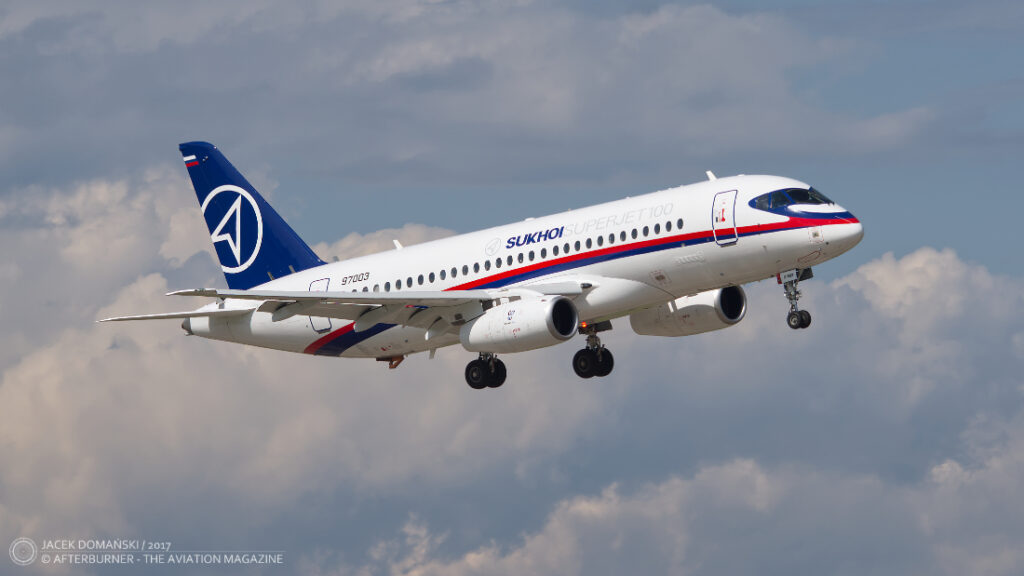
Certainly, such cooperation is common in the aviation industry. Even Airbus or Boeing use independent suppliers of systems and parts implemented into their aircraft. However, the SSJ 100 was marketed as Russian-designed and developed airliner, predominantly incorporating domestic know-how and technologies.
In 2011, the Sukhoi Superjet 100 commenced its regular service with Armavia airline from Armenia that became the first operator of that aircraft. It was also the first and only SSJ bought by that company. Next, about fifty examples of the Superjet were acquired by Aeroflot and a few more examples were bought by regional airline companies in Russia. In terms of export sales, twenty-two SSJs were acquired by Interjet in Mexico, seven by CityJet in Ireland and three by Sky Aviation in Indonesia. Individual examples of the SSJ were also bought in Laos, Thailand and Kazakhstan.
The first years of operations quickly proved the SSJ 100 is suffering from the typical teething issues of new development. Additionally, operation of the new Russian regional airliner was affected by poor quality customer care, including issues with post-sale service, aircraft maintenance and availability of spare parts.
In consequence, the Sukhoi regional airliner did not achieve any significant commercial success and never approached sales at the originally forecasted level. Following the aforementioned operational issues, several aviation companies cancelled their orders for the SSJ 100. Moreover, CityJet quickly retired its Superjet fleet and Interjet suspended most of the SSJ 100 operations, leaving only four aircraft in active service. According to the Russian aircraft register, there were approximately 230 examples of the Superjet built until today.
Shortly after its incorporation, the abovementioned UAC company presented its first commercial aircraft programme. It was launched it 2007 and introduced a narrow-body airliner designed by the Irkut company / Yakovlev construction bureau, named МС-21.
The MC-21 was marketed as Магистральный Самолёт 21 века, which can be translated as ´main aviation routes aircraft for the 21st century´, hence its designation MC-21 (although ´MC´ is commonly used also in the Western countries, the proper transliteration from Russian is MS-21). The airliner was created with incorporation of the latest achievements of the aviation industry. Its design included carbon fibre reinforced polymer wings and, moreover, the MC-21 had to be the first commercial aircraft to implement autoclave composite manufacturing. However, similarly to the SSJ 100, significant number of critical equipment were of the Western origin, such as avionics, landing gear, hydraulic and power systems, as well as engines that were made by Pratt & Whitney.

At the time of its introduction, the MC-21 was compared to the latest airliners developed by Airbus and Boeing, respectively to A320neo and 737 MAX. It was intended to replace the ageing fleet of the second-generation passenger jets (Tu-134, Tu-154 and Yak-42). The MC-21 was expected to begin its operational service in 2017 and in a short time pre-orders for almost 200 examples of that airliner were placed.
Regrettably, that initial flash out did not last very long and soon the MC-21 joined the family of Russian airliners ´in never-ending development´.
In 2012, the MC-21 type certification was postponed to 2015, as well as beginning of serial production that was now set for 2018. Despite several new declarations and almost seven billion USD spent on the ´airliner for the 21st century´ programme, the real date of its introduction to service was still unspecified.
In February of 2014, the Russian Federation annexed Crimea, marking the beginning of the Russo-Ukrainian War. The Western world reacted with sanctions against Russia that, in principle, had to affect the country´s economy and industry.
Forgoing the actual efficacy of sanctions that followed the annexation of Crimea, it initially seemed that – paradoxically – they boosted the domestic aviation industry. Limitations on export of goods and technologies implemented by the European Union, the United States and several other countries created the need to become independent from the Western resources. Therefore, the Russian-manufactured aircraft had a potential chance to become an interesting alternative for the domestic aviation companies.
First of all, in response to the aforementioned sanctions, the currently developed aircraft became a subject of so-called ´russification´, by receiving Russian replacements in avionics, navigation systems, engines and other equipment. This process created new solution for domestic airlines, as they were both saved from depreciation of the rouble against other currencies and, in addition, became independent from spare parts delivery and maintenance services from abroad.
In 2014, Vladimir Putin started personally investigating the matter of the further development of the Russian passenger aircraft. Faced with increasing shortage of regional airliners on the Russian domestic market, as well as consequences of economic sanctions against the Russian Federation, the president instructed the Russian government to speed up the development of the MC-21 and take into account the possibility of re-launching serial production of the Il-114.
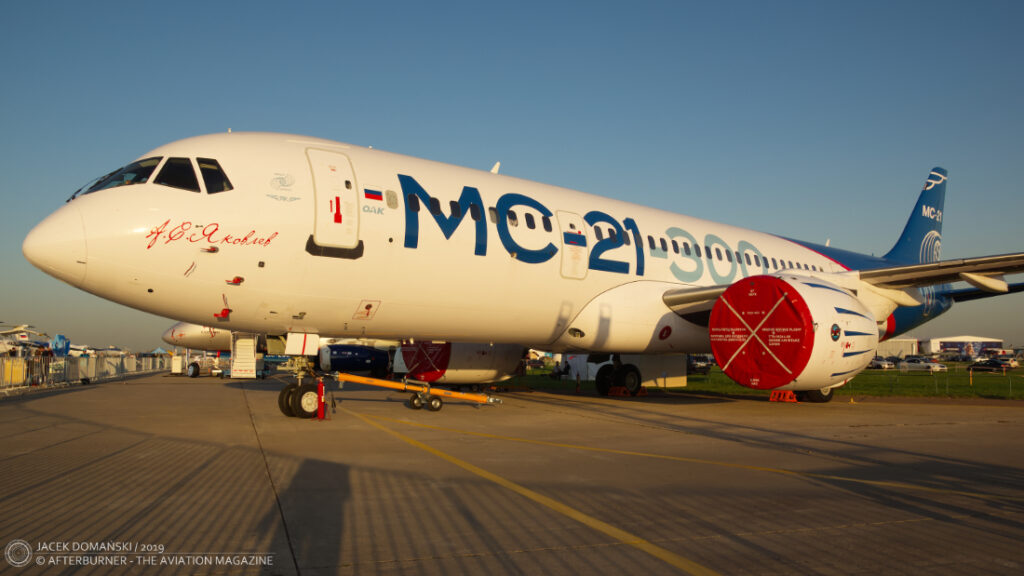
On 28th May of 2017, the MC-21 finally performed its maiden flight. Although it occurred at the time the aircraft was initially scheduled to commence operational service, it was a clear sign the works on the airliner gained new momentum. Additionally, its introduction to market was rescheduled for 2020.
Shortly after, the UAC company began with ´russification´ of the aircraft, replacing some of its critical equipment with Russian equivalents. However, the most important were the engines. The original Pratt & Whitney PW1000G powerplants were changed for new, Russian-made engines, designated PD-14 (Перспективный / Пермский Двигатель – Perspective / Perm-manufactured engine). On 15th December 2020, the MC-21-300 prototype equipped with two PD-14s, performed its maiden flight. At that time, UAC also made a revised sales forecast, expecting initial sales of twenty MC-21 airliners per year with future increase up to one hundred examples per year.
The aforementioned Il-114 was turned into completely domestic project. The aircraft received new TV7-117-ST-01 (ТВ-117-СТ-01) Klimov turboprop engines that replaced the originally used Pratt & Whitney PW127 powerplants, as well as KRET avionics, instead of Collins-made systems. Prototype of the redeveloped aeroplane performed its maiden flight on 16th December 2020, just one day after the modified MC-21-300. Operational readiness of the Il-114 was then set for 2023.
The ´russification´ did not spare the Sukhoi Superjet. The new variant of the regional airliner was designated SSJ 100R and changes included new engines, avionics and software systems. According to UAC, the modified variant of the aircraft had to be ready for operation in 2021.
Nevertheless, the late 2010s proved the existence of two alternate realities existing in Russia, with regards to passenger airliner market. The first was the world created by governmental authorities that kept on announcing expected sales of the new aircraft, proudly marketed and exhibited the new triad of Russian airliners (SSJ 100, MC-21 and Il-114) during MAKS trade shows, as well as continually published press releases to prove increasing interest in the new aircraft.
Meanwhile, in the parallel world, UAC repeatedly postponed the dates related with launching the serial production of all the new airliners as their development faced several technological issues. The Russian airlines continued with ordering new aircraft of the Western origin – in 2018, S7 acquired its first Boeing 737 MAX; in 2019, Ural Airlines received its first A320neo; and in March of 2020, Aeroflot became the first operator of Airbus A350 in the Eastern Europe. Moreover, the obsolete An-2 and An-26 aircraft were still the backbone of the regional aviation in remote Russian areas.

The situation had drastically changed in 2022, due to escalation of the conflict in Ukraine. At that time Russia faced with new, more and much stronger sanctions, within which delivery of new Western aircraft and spare parts was suspended. In addition, many countries banned the Russian aircraft from entering their airspace. It was then expected the Russian airlines would shortly lose their ability to operate the Western aircraft.
The new wave of sanctions, and progressive isolation of Russia from the Western world that followed, one more time increased the interest in domestically made airliners. The year 2022 was marked by several statements made by the Russian officials, as well as several announcements related to the new orders and expected deliveries of the aircraft from the new triad. In addition, the Russian government issued a plan to bring – until the end of current decade – the proportion of domestically produced aircraft to 80% of the total fleet operated by the Russian airlines.
UAC announced approximately seventy examples of the Il-114 to be made in the next few years, as well as about three hundred MC-21-300s and about ninety SSJ 100 regional airliners. Moreover, the company returned to the already abandoned project of the Tu-214 (with approximately seventy aeroplanes planned to be made by 2030) and even announced return of the Il-96 long-haul airliner.
They were some theoretical numbers and promises made by the biggest Russian aviation corporation. However, more than year has already passed and did not bring any improvement to the development of the domestic airliners.
Already in 2022, the Il-114 development was marked by yet another delay and change of deadlines. Its serial production was set to begin in 2024 and the number of examples in the initial batch was reduced to only eight aeroplanes. During the year, one prototype of the aircraft underwent static testing, and two more prototype examples were in different phase of construction.
In 2023, the TV7-117-ST-01 engines finally received the type certification. The second Il-114 prototype performed its maiden flight just a few days ago, on 31st March 2024. Nevertheless, UAC is still expecting to deliver the first serial manufactured aircraft by the end of this year. The first, and so far the only, potential buyer for the Il-114 regional airliner is State Transport Leasing Company (Государственная транспортная лизинговая компания) that ordered three examples of the aircraft.
